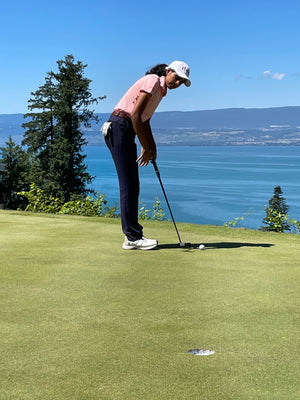Why the Right Putter is Essential for Your Golf Game
Jan 05, 2024
When it comes to golf, every player knows that putting is essential if you want to win. It doesn't matter how far or straight you hit the ball if you can't sink it in the hole. A good putter can make all the difference in your game, and it's important to take the time to choose the right one for you. In this blog post, we'll talk about putters in general, what to look for, and how to choose the right one for your game.
The first thing you need to know about putters is that they come in all shapes and sizes. The most common shapes are blade and mallet, with blade putters being the more traditional of the two. Blade putters are flat and usually have a simple, clean design. Mallet putters, on the other hand, have a larger head and come in different variations such as square, rounded or fancy shapes. Ultimately, the shape you choose will come down to personal preference and what feels comfortable in your hands.
Our perception of a surface's colour depends in a complex way on the colours of surrounding surfaces; this ‘colour contrast’ is linked to the ‘colour constancy’ which is important for object recognition. In other words, the choice of the colour for your putter is crucial not only for aesthetic reasons but also for a proper perception of your stroke.
A good putting stroke has few moving parts and is based around a single rhythm or cadence – regardless of the length of putt. That way, you can simply make a longer or shorter stroke to vary length of your putts with accuracy and consistency. Knowing your club path can help you define the shaft insertion of your putter. Having a more straight path a center-shafted with a complete face-balance might be more appropriate. The more the curved path is pronounced the more towards toe-hang the putter insertion might be helpful.
Weight and balance are also important factors to consider when choosing a putter. The weight of the putter will affect how it feels in your hands and how it moves through your swing. Generally, heavier putters are better for players who have a slower putting stroke, while lighter putters are better for players who have a faster stroke. Balance is also important because it determines how stable and smooth the putter feels during the stroke. A putter that is too heavy or too light can throw off your balance, which can affect your accuracy.
One last thing to consider when choosing a putter is the alignment aid, mostly in form of alignment lines or dots on the top of the clubhead or on the mass behind the striking face. Curved faces have the advantage of showing some more alignment aids on the striking face itself. The purpose of the alignment aid is to help you line up your putter to the ball and the target, improving accuracy.
In conclusion, choosing the right putter is an important part of any golfer's game. The shape, alignment aid, weight, balance, and face insert are all factors to consider when making your choice. Ultimately, it's important to choose a putter that feels comfortable in your hands and helps you sink more putts. Also consider seeking help by golf professionals and by taking the time to research and try out different putters, you can find the perfect one for your game and improve your overall score.






